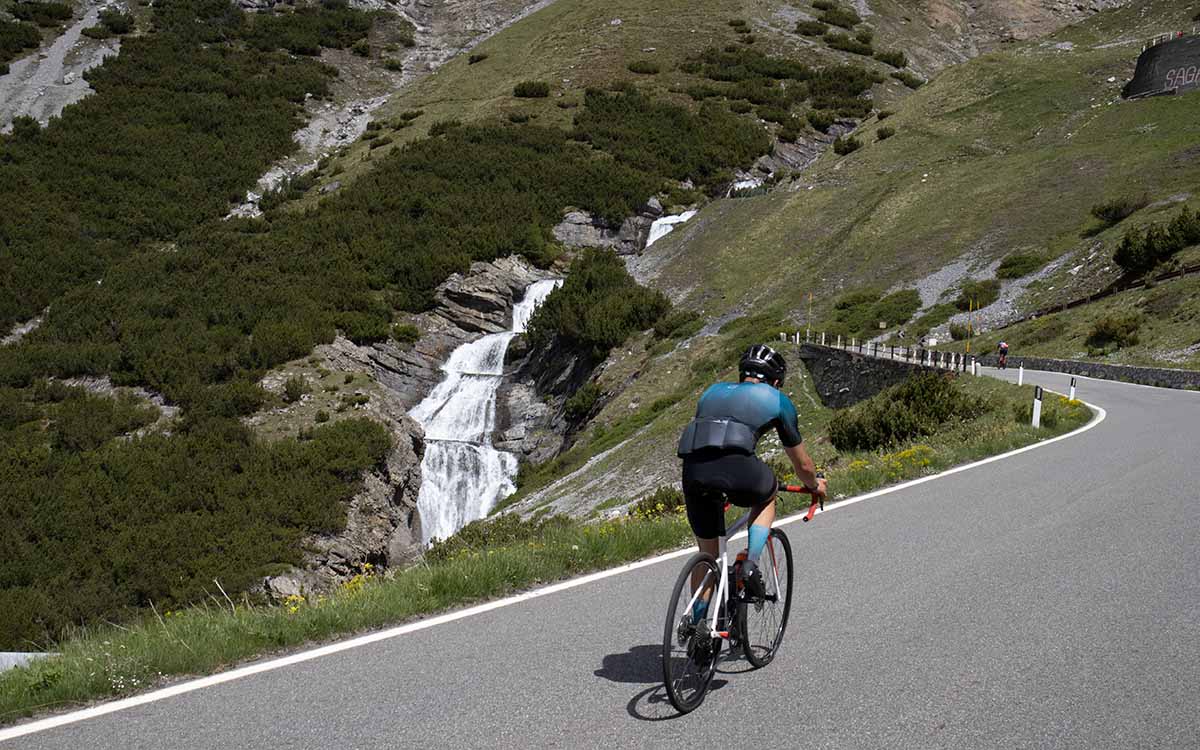The Stelvio Pass is a spectacular mountain pass that connects Lombardy, Switzerland and Tyrol; it's the highest drivable road in Europe. The pass is located within the Stelvio National Park, and reaching the summit is truly spectacular, offering views of the Stelvio Glacier and the high peaks of the Ortles-Cevedale Group. Thanks to the glacier, the Stelvio Pass is also a popular ski destination during the summer months.

The route is quite challenging: starting from Prato (BZ), the total length is about 25 km with an elevation gain of 1,800 meters and an average gradient of 7%. In some sections, however, the gradient reaches over 14%.
It's possible to start the ascent from three different points: from Prato to Stelvio on the South Tyrol side, from Bormio on the Valtellina side, or from Santa Maria on the Swiss side.
The Stelvio Pass has been included in the Giro d'Italia's route nine times, and on three occasions, it was also the final stage of the race.

The Mortirolo Pass is one of the most difficult and challenging passes in the world. It has been a historic stage of the Giro d'Italia, and is the most interesting and challenging destination to compete against. The gradient is terrifying: over 12.4 km, the elevation gain is 1,300 meters with an average gradient of 10%. In some sections, the maximum gradient reaches over 20%. The Mortirolo Pass connects the province of Sondrio with the province of Brescia. The towns on the two sides are Mazzo, on the Valtellina side, and Monno, on the Brescia side. The climb from Mazzo is by far the most difficult and rewarding.
This mountain road was first introduced in the Giro d'Italia in 1990, but the most famous and well-known stage was during the Giro d'Italia in 1994 on June 5th. Every cycling enthusiast remembers Marco Pantani's great escape on the Mortirolo, standing on the pedals to drop every opponent and teammate. To commemorate the man and his achievement, a monument was placed at the 11th turn of the climb.
